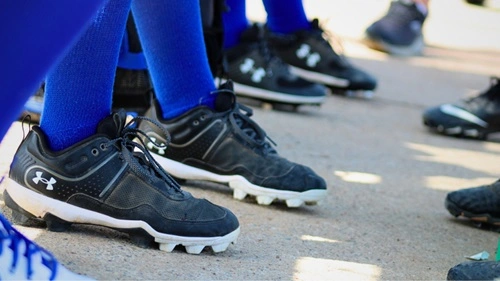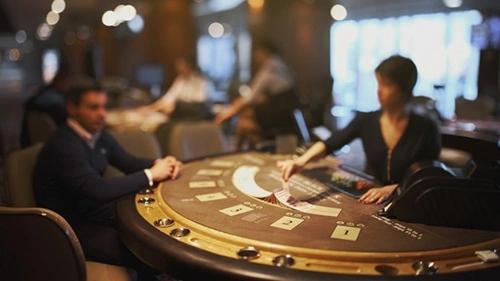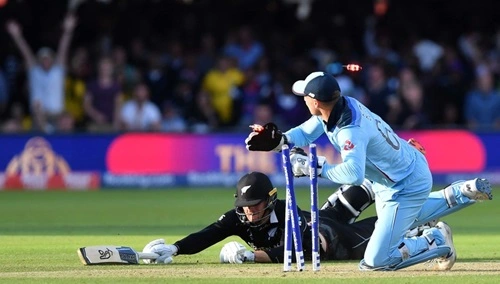Cleats are an essential part of sports gear, providing athletes with the grip, stability, and comfort they need to perform on the field. While cleats for different sports may appear similar at first glance, they are specifically designed to suit the unique demands of each game. Soccer cleats and softball cleats are two distinct types of footwear that cater to the needs of players in these sports, differing in design, stud configuration, material, and functionality.
This article explores the difference between soccer cleats and softball cleats, helping players choose the right gear to optimize their performance and safety.
What Are Soccer Cleats?

Soccer cleats are specialized shoes designed for soccer players to provide traction, control, and maneuverability on the field. Soccer requires constant running, quick directional changes, and precise ball control, so cleats for this sport are built with features that enhance these abilities.
Key Features of Soccer Cleats
- Low-Cut Design: Soccer cleats are typically low-cut to allow maximum ankle mobility, which is essential for quick movements and agility.
- Stud Configuration: The studs are strategically placed to provide grip without impeding movement, with no stud at the toe to prevent interference when kicking the ball.
- Material: Made from lightweight materials like synthetic leather or mesh to enhance speed and ball control.
- Weight: Soccer cleats are lightweight to facilitate faster movements across the field.
- Usage: Used on various surfaces, including grass, turf, and artificial fields.
What Are Softball Cleats?
Softball cleats are designed specifically for softball players, providing the grip and stability needed for running on dirt and grass surfaces, sliding into bases, and fielding. Softball involves frequent sprints, quick stops, and lateral movements, so the cleats are tailored to meet these demands.
Key Features of Softball Cleats
- Variety of Cuts: Available in low, mid, and high-cut designs to offer varying levels of ankle support.
- Toe Stud: A toe stud is present in softball cleats to improve traction during pitching and quick starts.
- Material: Often made from durable synthetic materials to withstand wear and tear from sliding and intense gameplay.
- Weight: Slightly heavier than soccer cleats to provide additional support and durability.
- Usage: Optimized for dirt and grass surfaces found on softball fields.
Key Differences Between Soccer Cleats and Softball Cleats
| Feature | Soccer Cleats | Softball Cleats |
|---|---|---|
| Design | Low-cut design for ankle mobility. | Available in low, mid, and high cuts for ankle support. |
| Stud Placement | No toe stud; evenly distributed for multidirectional movement. | Includes a toe stud for traction during pitching and sprints. |
| Material | Lightweight materials for speed and ball control. | Heavier, more durable materials for sliding and rugged use. |
| Weight | Lightweight to enhance speed and agility. | Slightly heavier to provide durability and stability. |
| Primary Surface | Grass, turf, and artificial fields. | Dirt and grass on softball fields. |
| Toe Design | Rounded and smooth for ball control. | Reinforced toe for durability and traction. |
| Durability | Built for flexibility and speed; less emphasis on wear resistance. | Designed to withstand intense sliding and heavy use. |
| Usage | Exclusively for soccer. | Exclusively for softball or baseball. |
1. Design and Cut
Soccer Cleats
- Always low-cut to provide maximum ankle mobility, which is essential for running, quick pivots, and dribbling the ball.
- The sleek design minimizes bulk, ensuring that the player can move quickly without restrictions.
Softball Cleats
- Available in low-cut, mid-cut, and high-cut designs to cater to different levels of ankle support:
- Low-cut: Prioritizes speed and mobility.
- Mid-cut: Balances mobility and support.
- High-cut: Offers maximum ankle support, especially useful for pitchers and players prone to ankle injuries.
2. Stud Placement and Configuration
Soccer Cleats
- No toe stud: Soccer cleats lack a front stud to prevent interference when kicking the ball.
- Strategic placement: Studs are evenly distributed to allow multidirectional movement and traction on grass and turf.
- Designed for continuous running and quick directional changes.
Softball Cleats
- Toe stud included: A front stud provides extra traction for explosive starts and pitching.
- Specialized configuration: Studs are positioned to offer stability on dirt and grass surfaces, supporting quick stops, sprints, and lateral movements.
- Cleats are built to handle the sliding and stopping common in softball.
3. Material and Durability
Soccer Cleats
- Made from lightweight synthetic leather or mesh to reduce weight and enhance speed.
- Less emphasis on durability because soccer involves less sliding and rough contact with the ground.
- Focused on comfort and ball control, with materials that mold to the foot for better touch.
Softball Cleats
- Constructed from durable synthetic materials designed to withstand the rigors of softball, including frequent sliding and rough play.
- Reinforced toe areas for added durability and protection during pitches and dives.
- Slightly heavier construction provides stability and longevity on rugged fields.
4. Weight
- Soccer Cleats: Lightweight for speed and agility, enabling players to move quickly across the field.
- Softball Cleats: Slightly heavier to offer more support and durability, especially important for fielding and running on dirt surfaces.
5. Surface Compatibility
Soccer Cleats
- Designed for grass, turf, and artificial fields. The stud configuration provides grip without tearing up the surface.
- Unsuitable for dirt surfaces due to lack of a toe stud and reinforced durability.
Softball Cleats
- Specifically engineered for dirt and grass surfaces commonly found on softball fields. The toe stud and rugged design ensure stability and grip on these surfaces.
- Not ideal for turf or artificial fields as the stud configuration may not provide sufficient grip.
6. Toe Design
Soccer Cleats
- Rounded, smooth toe box to improve ball control and precision during kicks.
- Not reinforced, as soccer doesn’t involve frequent ground contact.
Softball Cleats
- Reinforced toe area to handle the wear and tear caused by pitching and sliding.
- The added durability ensures the cleats last longer despite rigorous use.
7. Durability
- Soccer Cleats: Designed for flexibility and speed, but not built to withstand the same level of abrasion as softball cleats.
- Softball Cleats: Built with durability in mind, making them better suited for rugged, high-impact activities like sliding and running on dirt.
8. Usage and Sport-Specific Features
- Soccer Cleats: Tailored exclusively for soccer to support constant running, quick turns, and ball control. Not suitable for other sports due to the lack of durability and stud placement required for dirt surfaces.
- Softball Cleats: Designed specifically for softball or baseball, providing the traction, support, and durability needed for running, sliding, and fielding on dirt and grass.
How to Choose Between Soccer Cleats and Softball Cleats
When deciding which cleats to buy, consider the following:
- Sport: Always choose cleats designed for your sport. Soccer cleats are not ideal for softball and vice versa.
- Field Type: For dirt and grass surfaces, softball cleats are more suitable. For turf or artificial fields, soccer cleats are the better choice.
- Comfort and Fit: Ensure the cleats fit snugly without causing discomfort, as improper fit can affect performance and lead to injuries.
- Budget: While soccer cleats tend to be lighter and slightly more expensive, softball cleats offer more durability for heavy-duty use.
Conclusion
Although soccer cleats and softball cleats may look similar, their differences lie in their design, functionality, and intended use. Soccer cleats prioritize speed, agility, and ball control, making them ideal for running and precision on turf or grass. Softball cleats, on the other hand, emphasize durability, stability, and traction on dirt and grass fields, catering to the specific needs of softball players.
Understanding the difference between soccer cleats and softball cleats is essential for athletes to choose the right footwear, ensuring optimal performance and safety on the field. Whether you’re chasing a soccer ball or sliding into home plate, the right cleats can make all the difference.



